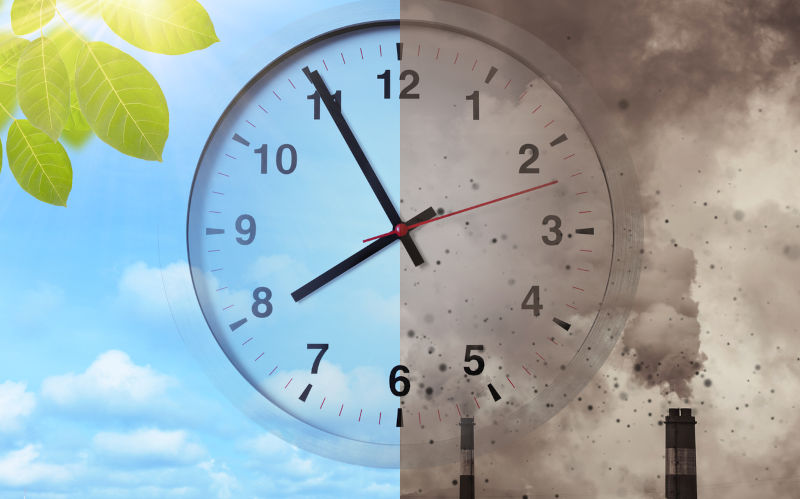Climate action: there is no time left
September 5, 2023
Loud warnings of climate disaster continue. We could be in for a catastrophe from which there is no recovery. But we are dawdling along. It is time for more decisive action.
Last November, opening the COP27 world climate conference in Cairo, Antnio Guterres, Secretary-General of the United Nations, proclaimed We are on a highway to climate hell with our foot on the accelerator.
Opening a press conference on 27th July, Guterres said: The era of global warming has ended; the era of global boiling has arrived. Leaders must lead. No more hesitancy. No more excuses. No more waiting for others to move first. There is simply no more time for that. It is still possible to limit global temperature rise to 1.5 degrees Celsius and avoid the very worst of climate change. But only with dramatic, immediate climate action.
There is powerful urgency in the Secretary-Generals words. And so there should be. He was announcing that July 2023 was the hottest month ever recorded. Heatwaves had swept Mediterranean countries, North America, China and South-East Asia. Massive fires were burning in Canada. In the same month, extreme rain fell in India, Korea, Japan and China, with parts of Beijing itself inundated. These are the sorts of things that climate scientists have been predicting for decades, and they are happening now.
As climatologist Dr Joelle Gergis said in the cover article of the last Monthly, the climate disasters of the northern summer are an ominous sign of what we can expect in Australia in the summer to come.
It wont get better, but it could get worse, much worse. We are on a track to reach 2.5 to 3.0 degrees of warming by the end of this century. This could go substantially higher if feedbacks set in. For instance, large-scale melting of arctic permafrost could release vast amounts of methane, a very powerful greenhouse gas, which would push global warming further.
The climate hell Mr Guterres refers to has more (and more extreme) droughts and heatwaves, more (and more extreme) floods and bigger tropical storms. Sea levels could rise more quickly than now as glaciers and ice-caps melt. Coral reefs would be largely wiped out. Global food supplies would be drastically affected.
The potential is for catastrophe the like of which we have never seen, and which is hard to imagine.
Think about Africa. A broad swathe from Somalia across to the Sahel countries is already subject to drought, famine and wars. It is hard to imagine life there as the climate changes further.
The world has had a remarkable way of recovering from the worst catastrophes in the past. The Black Death in the fourteenth century killed about a third of people in the countries it touched but a century later, many countries were thriving. Indeed, it may have been a better world, as shortages of labour had tipped the balance of power against feudal landowners. Hiroshima, which I visited recently, is now a prosperous modern city, 78 years after being devastated by the first atomic bomb attack.
However, the climate will not return to what we have known. There is no recovery. This may have to wait until the slow changes in the earths orbit and axis bring on another ice age tens of thousands of years from now. Feedbacks such as those from the release of methane from permafrost mean that if we reach three degrees, we are probably headed for five or six.
Yet, here in Australia, there is little of the urgency the Secretary-General calls for. We had a burst of hope around election time, but since then there has been little. New coal mines and gas projects continue to be approved. Studies find that methane is billowing out of Australian projects, and little is done. The Government is tiptoeing towards introducing vehicle emission standards: we will be the last developed country to do so, bar Russia. Recent figures show that, apart from the rather dubious statistics for land use, Australias emissions have fallen by only 1.4 percent since 2005.
There is no pressure to act from the Opposition. Quite the opposite. They and their media allies are calling for a pause in one area where we are making progress, decarbonising electricity, to ponder small nuclear reactors. Anyone with half an hour and access to Google can find that these will not be available until 2030 at the earliest, that they are likely to be far more expensive than renewables and storage, and that there will be many issues of regulation, planning (who wants one next door?) and waste disposal. People believe what it suits them to believe, and this silly distraction is getting a following.
The USA, the number one emitter, is getting on with reducing its emissions. The Brookings Institution reckons President Bidens remarkable Inflation Reduction Act (which has nothing to do with inflation) will lead to emissions falling by between 32 and 42 percent by 2030 compared to the level in 2005.
We live at a pivotal time. We should be taking the decisive action the Secretary-General calls for. If we fail, in thirty or forty years our grandkids will have little to thank us for.

